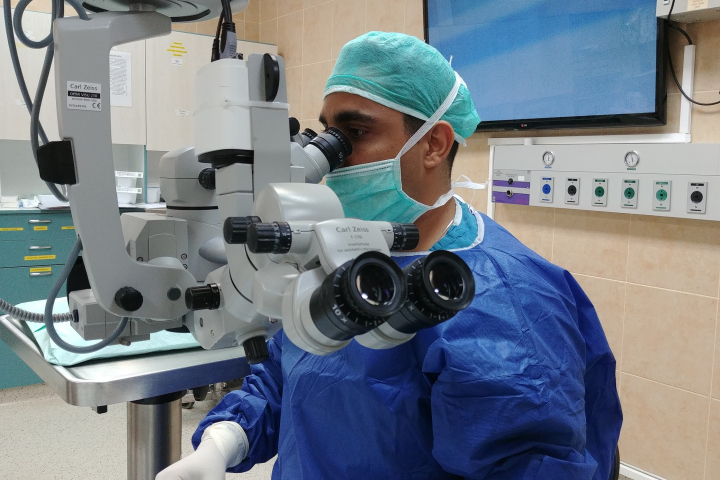
The placenta, one of the most fascinating organs in the woman’s body, is known for its important properties in helping to ensure fetal safety. Some believe the placenta can also help solve other medical problems. However, unusual use of the female organ was recently made when Rambam Health Care Campus used a placenta to restore a young woman’s eyesight.

A young woman in her 20s recently came to Rambam after suffering significant chemical burns on the surface of her eye. This serious injury threatened her eyelids, the eye itself, and her eyesight, putting her at risk for blindness.
“This is very dangerous material – even more dangerous than acidic material,” cites Dr. Shmuel Graffi, Chairperson of the Israeli Cornea Society and a senior doctor in Rambam’s Department of Ophthalmology, who treated the young woman. “The material was trapped between the woman’s contact lens and her cornea and began to digest the corneal tissue while penetrating deeply into the eyeball. A difficult injury like this one requires a creative solution in order to overcome the dangers it creates for the eye and the eyesight.”
The material that injured the woman’s eye caused her immune system to develop an extreme reaction, the creation of a scar to protect the eye. This mechanism, in the absence of appropriate treatment at the critical time close to injury, may cause actual damage to the “transparent” front parts of the eye (conjunctiva and cornea). In addition, the surface area of the eye, which naturally produces moisture, may develop extreme dryness and considerable pain.
To deal with this complicated injury, Rambam doctors decided to use an unusual solution – coating the affected membrane with an amniotic membrane – the superficial layer of the placenta. This unconventional surgical procedure is performed in only a few centers in Israel.
In order to perform the transplant in the young woman’s eye, a unique process was used to preserve the amniotic membrane harvested from a donor following a cesarean section. After ensuring the suitability of the membrane, the young woman underwent a complex, precise, and delicate procedure, during which the membrane was sewn under the woman’s eyelids. This procedure necessitates highly a highly skilled surgical technique on the part of the surgeon. The successful operation was followed by a short recovery period. The implant was successfully absorbed by her body and the young woman’s vision was restored.
“Reconstructive surgery using placental transplantation is a very special procedure for treating severe burns on the surface of the eye,” explains Dr. Graffi, who led the surgery. “During pregnancy, the membrane prevents the fetus from being rejected from the womb and vice versa, and allows them to coexist. In addition, the membrane contains important nutrients and helps the fetus to grow and develop. We actually “exploit” these properties during the implantation process, with the intention that the body will absorb the nutrients from the membrane that has been attached to the surface of the eye, allowing for recovery. Following the successful absorption of the implant, rehabilitation, and the creation of a healthier structure are expected. These, in turn, will enable, if necessary, corneal transplantation or cataract surgery.”
Source: American Friends of Rambam